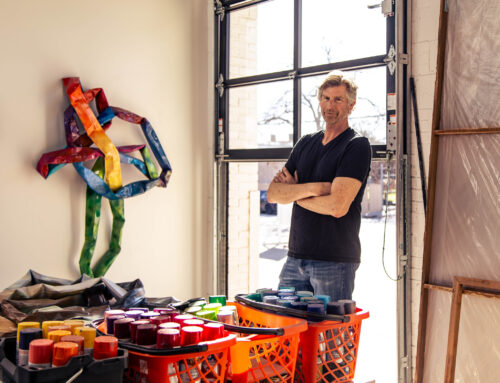Scraps of barbed wire, spoons and official documents are just a few of the items that came out of World War II unscathed.
At the Dallas Holocaust Memorial Center, these small details help piece together a bigger picture: the stories of people, both those who died and those who survived.
Though it opened in 1984, the museum’s origins go back to 1977, when approximately 200 Jewish Holocaust Survivors – many in the Preston Hollow area – joined together and formed an organization called Holocaust Survivors in Dallas. According to the center’s web site, this group’s “unique experience of rebuilding their lives after surviving the terror of the Holocaust gave them the fortitude and background needed to provide a means to educate the public” about the Holocaust. They also sought to memorialize their loved ones and other victims.
Located in the Aaron Family Jewish Community Center, the museum remains in contact with about 130 local survivors, including many in the Preston Hollow area.
The center’s director, Elliott Dlin, and his staff weave whatever narrative they can from the donations and permanent loan exhibits of these survivors.
Unfortunately, “biology is taking its toll,” says Dlin. Of those survivors still alive or the families of those already gone, unawareness still exists of the huge impact a scrap of ghetto money could have on future generations, he says.
“Some people think: Surely nobody but my family or me would be interested in my artifact,” Dlin says. “And that kind of attitude is something we want to break.”
But before tackling the larger issues of education and awareness, the museum needs to accomplish another objective. Dlin says the center has peaked in its ability to deal with visitors and needs more room.
“The museum can’t tell 100 percent of the story in 18 percent of the space,” he says.
Luckily, the Jewish Federation of Greater Dallas has a $50 million campaign underway to create new spaces and to expand existing Jewish institutions in Dallas. (The JCC complex is set to undergo a 100,000-square-foot expansion.) Of that money, the museum will receive $2.8 million to help add 11,000 square feet to its cramped space. Although remaining on JCC grounds, the memorial center will branch off as its own entity, with a separate entrance and its own hours.
Dlin hopes these changes will help the museum accomplish another goal: attracting a greater variety of visitors. To date, the bulk of its visitors have been school groups (close to 30,000 children visit each year).
Architect Johnson Rollins of the Dallas-based firm Goode, Fulton and Farrell is heading up the remodeling/expansion project that may begin construction this fall.
“The rotunda of the memorial center is by far the most distinctive element we have designed for the JCC project. Visitors will cross a steel bridge reminiscent of the construction in the concentration camps and descend a flight of stairs to enter the gallery.”
Dlin admits that even with the expansion, the museum will never be able to tell “every story, every aspect, every issue. But,” he says, “we have to tell pieces of the story.”
Among the options available while touring the museum are a self-guided tour on tape, group tours or a two-hour slide and video presentations narrated by docents. There’s also a library with more than 2,500 books and periodicals about the Holocaust. Call 214-750-4654 for more information.






